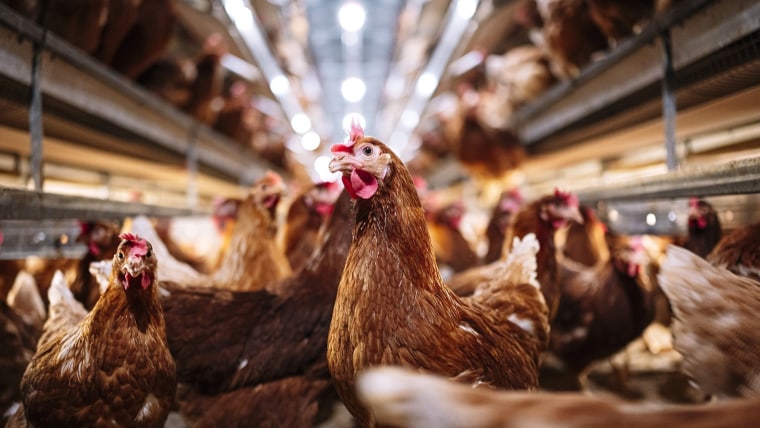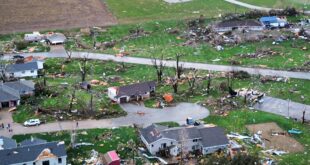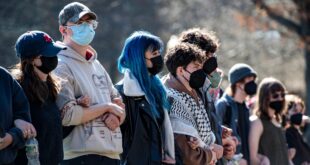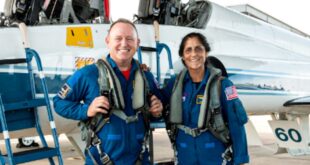[ad_1]
Hundreds of wild sea lions in South America, a farm of minks in Europe, and more than 58 million poultry birds have died.
All of these animals fell victim to the impact of avian influenza — a virus rapidly circulating the globe, killing wild and domesticated animals, disrupting ecologies and hampering the food supply.
Human health is inextricably linked to animal health, and these events are spooky reminders that a widespread outbreak in animals has potential consequences for humans.
In the U.S., the most recent wave of bird flu has struck in 17 mammals and more than 160 birds. It’s the broadest outbreak of H5N1 since it surfaced as a concern in China in 1996.
The virus has been under close watch by scientists, even more so now that it has spread far and wide.
“This is the number one potential pandemic virus everyone has been interested in for a long time,” said Richard Webby, an infectious disease researcher at St. Jude Children’s Research Hospital in Memphis, Tennessee, and the director of the World Health Organization Collaborating Centre for Studies on the Ecology of Influenza in Animals and Birds.
Tedros Adhanom Ghebreyesus, the World Health Organization’s director-general, said on Wednesday that avian influenza’s spillover to mammal species must be monitored closely, and that risk to humans remained low for the moment.
“But we cannot assume that will remain the case, and we must prepare for any change in the status quo,” he said.
The sheer amount of H5N1 circulating has heightened the risk the virus could spill over into other species, develop the ability to transmit among people and become a pandemic.
But the virus has yet to unlock a complicated string of mutations or genetic changes that would allow it to spread more rapidly in people.
“It’s a series of events, each of which is fairly improbable. This is why I say the risk to humans is presently low. The evolutionary barriers are high,” said Anice Lowen, a virologist and associate professor at Emory University School of Medicine. “It is a numbers game. So that’s one reason why the scale of the current avian outbreak is concerning.”
Researchers are particularly concerned about this version of avian influenza, H5N1, because most humans haven’t dealt with it before.
“We don’t have an immune response against H5. That’s why the virus has pandemic potential,” Lowen said.
Scientists have also observed high death rates and severe disease in chickens and mammals that have contracted H5N1, which has made them concerned the virus could cause severe sickness in people, too.
The U.S. has counted a single human case of H5N1 in the United States — a prison inmate in Colorado culling infected birds on a farm. Previous spillovers to humans, mostly in people in Southeast Asia and North Africa who likely handled infected birds directly, had high death rates, though those numbers could be biased by limited reporting of mild cases.
H5N1 has long been a top pandemic concern. The version that’s been circulating in ducks and other wild birds has evolved and adapted for efficient spread.
As those animals travel, the virus does too, through droppings, saliva and nasal secretions.
Wild birds are shedding virus and infecting animals “over a larger amount and a larger geographic footprint than ever before,” said Bryan Richards, the emerging disease coordinator at the United States Geological Survey National Wildlife Health Center. More than 6,100 wild birds have tested positive for the virus in the U.S.
Poultry farm birds likely become infected from contact with wild bird feces or other secretions.
Scavengers like bears, raccoons and foxes have also been infected, likely after eating a dead or diseased bird, Richards said. Marine mammals — including dolphins — have tested positive, too.
Recently, more than 500 sea lions were found dead with H5N1 in Peru. It’s not clear if the virus was spreading among these species or if animals were infected through food.
The virus is poorly adapted for spread in people.
“The avian virus is not as good at attaching to human cells as they are in the birds airways. They’re just not adapted to humans,” said Dr. Helen Chu, an infectious disease physician and influenza expert at UW Medicine in Seattle.
To spread effectively in humans, the virus would need to make several genetic changes. That process would likely take place in other mammals.
Webby and Lowen said there were two main processes the virus could undertake to evolve a better bind with receptors in human respiratory cells.
The first would be for the virus to change rapidly through reassortment, an “evolutionary shortcut” in which an animal becomes infected with both an avian influenza virus and a human virus, Lowen said. During the coinfection, the two segmented influenza viruses could exchange bits of genetic code and combine to create a chimeric virus.
That virus would then likely need more replication to fix mismatched genes and develop traits that would allow it to flourish in humans.
“Reassortments would be very concerning to see, but probably they still wouldn’t be able to transmit in humans,” Lowen said. “Likely what would be needed is more evolution to fix the mismatches.”
Previous avian influenza pandemics — which began in 1957 and 1968 — required both reassortment and additional mutations before they were able to spread widely among humans, Webby said. Each of these pandemics killed about 1 million people worldwide and about 100,000 people in the U.S.
The second option is for the virus to mutate within a dense group of animals. Researchers grew concerned after an apparent outbreak of H5N1 on a mink farm in Spain.
“They’re in small cages very close together. There’s a level of efficiency of transmission,” Chu said of the mink.
Studies more than a decade ago showed that ferrets could pick up mutations for airborne transmission of H5N1 after serial infections.
In the recent mink farm outbreak, the virus likely spread from mink to mink, Webby said. Although it picked up one mutation of concern, it largely remained adapted for birds. The mink were culled.
“Luckily it was stamped out,” Webby said.
The virus faces steep genetic hurdles, but the more it spreads in animals, the more chances it has to surmount those barriers.
Lowen said governments should invest further in surveillance of potential hosts that could help the virus leap to humans, consider measures like vaccination to limit the spread in poultry and invest in science that will help determine what genetic changes could be worrisome for people.
 Latest Breaking News Online News Portal
Latest Breaking News Online News Portal





